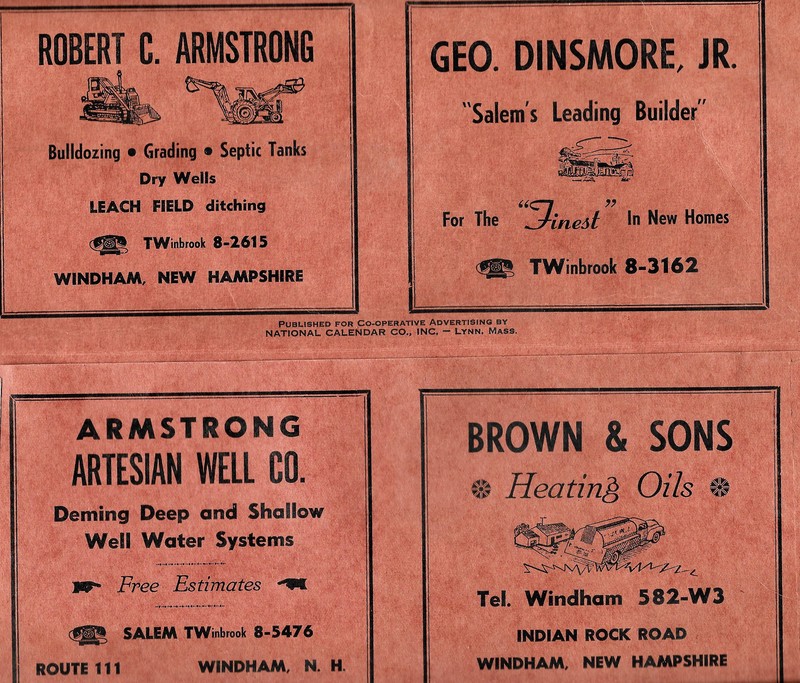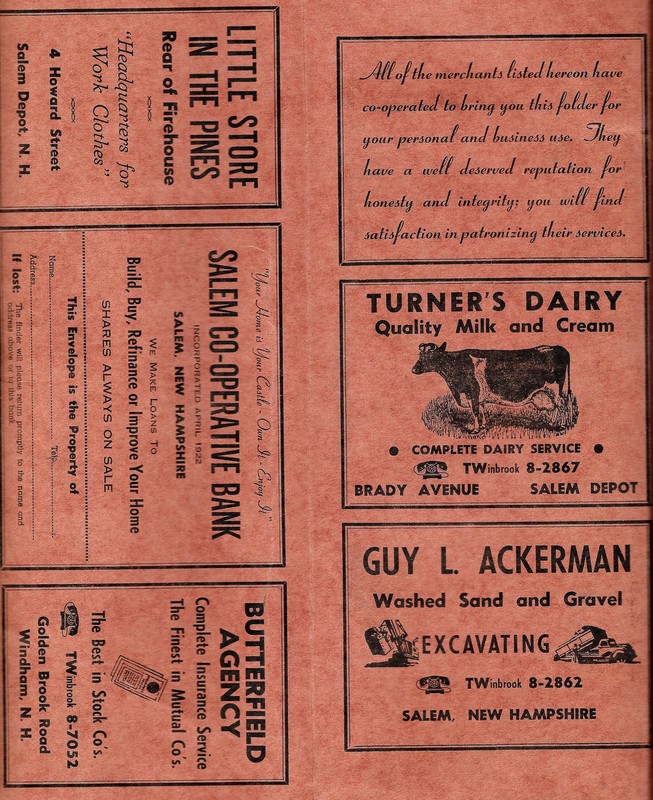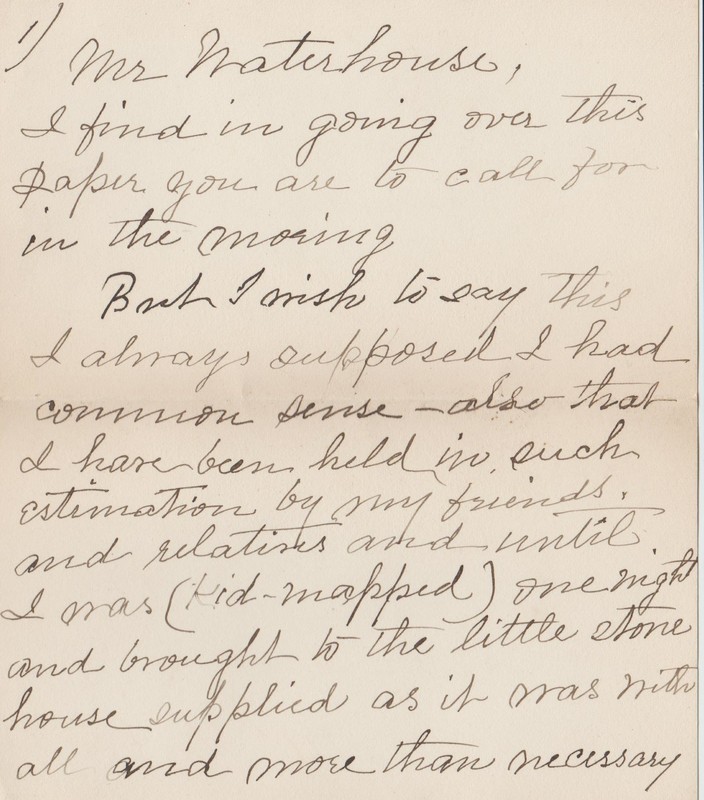|
This 1950s bank envelope from the Salem Co-Operative Bank features advertising from several businesses in Windham. Included are ads for businesses of well-known men in town, including Armstrong, Brown, and Butterfield. The only business with a Windham exchange telephone number was Brown & Sons, with a telephone number of 582-W3. All the other Windham businesses featured on the envelope use Salem exchange telephone numbers, even the Butterfield Insurance Agency located on Golden Brook Road. The first telephone in Windham was installed at the turn of the 20th century by George Clark, who ran a telephone line from Hudson to his store on Mammoth Road. Not long after Clark installed his telephone, William H. Anderson had a telephone installed at his gristmill in West Windham. Shortly thereafter, telephone lines began to spread throughout Windham; different regions of Windham were serviced by the exchanges of four different towns: Nashua, Derry, Salem, and Pelham. The use of the various exchanges began to fade out by the 1960s and 1970s.
0 Comments
This early 20th century letter was written in West Windham by a now unknown author. By examining the handwriting, and the content of the letter itself, it is very possible the letter was written by the same person who had penned a letter to Thomas Waterhouse, which I previously posted. This letter even refers to the same property that was being sold by the author. It is possible that this letter was even written to Mr. Waterhouse. Unfortunately, the letter is not complete, and it cannot be known if the people referred to in the letter resided in Windham. However, there is the mention of a Campbell, which is likely one of the Campbell's of Windham. Despite the lack of information about the letter itself, the letter provides an interesting look at life in Windham at the turn of the 20th century. ...through the nagging of a nuisance by name of Campbell pacing off my grounds and at the same time was informed I was placcarded[sic] in front for (sale) by a man sitting on my porch being put there by Braybrook Walsh. Finally Walsh called one evening + while sitting on the big sofa, he asked what I would sell my house or home for. My reply was not one cent less than twenty four thousand, he sitting in front of me in a chair[,] immediately got up[,] knocked over his chair running around the chimney to get into the hall and over to the front door[,] slamming it that I felt all the glass was broken with the rattling. I have not seen him since and suppose he is still running a race with Campbell to keep warm. Finally Mr. Harrington called one morning, Miss Miller my friend and housekeeper opened the door who previously had rented a room in one of his buildings. Finally asked if would sell by Mr. Harrington, my reply was... What Mr. Harrington's reply was to the price is lost along with the remainder of the letter; we can hope that his reply was less spirited than that of Mr. Walsh. In 1900, the average price of a home was $5,000, it is likely the property included a significant amount of acreage, especially being located in the then rural community of West Windham.
This early 20th century letter to Thomas Waterhouse concerns the matter of a property being sold by the, now unknown, writer. It is possible that author of the letter resided in Windham, and that the "little stone house" and the $24,000 property referred to in the letter were both located in Windham. Although the several page letter is incomplete, the transcription is as follows: Mr. Waterhouse, Unfortunately Mr. Walsh's response to the price is unknown as the entire letter did not survive. Waterhouse ran his family's store in West Windham, which opened in 1921. Originally named Shorty and Effie's General Store, the store was later renamed to the Waterhouse Country Store. Waterhouse Sr. also served as a Windham police officer in the early 1940s, being one of the first Windham officers to wear an official uniform.
|
AuthorDerek Saffie is an avid Windham historian who enjoys researching and sharing his collection with all those interested in the history of the New England town. Archives
November 2019
Categories
All
|



